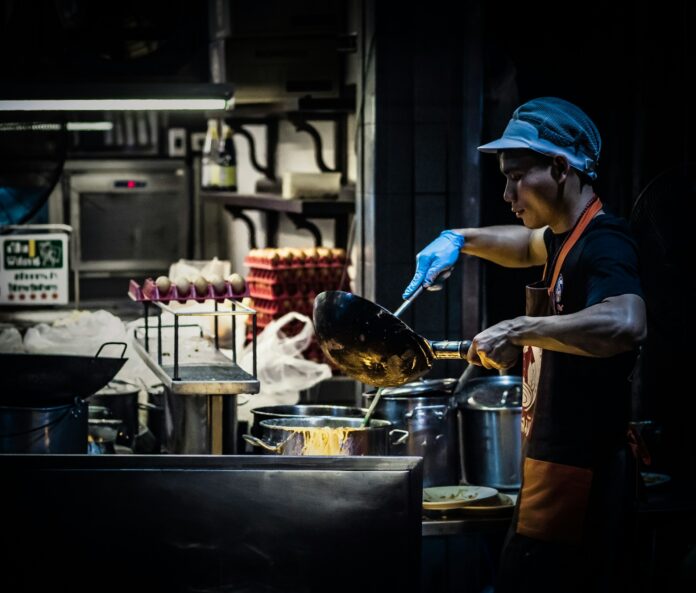The term ’boutique hotel’ now appears so frequently in London’s hospitality landscape that you might be forgiven for wondering if any joint with fewer than 300 rooms has adopted the label. Yet beyond the marketing veneer lies a genuine movement—a collection of fiercely independent properties offering experiences tough to duplicate or franchise.
These singular hotels—each with its own distinct narrative—have emerged as the thinking traveller’s alternative to both budget chains and luxury monoliths. They represent London at its most authentic: occasionally eccentric, perpetually creative, and stubbornly resistant to homogenisation.
From Georgian townhouses where history seeps through the floorboards to reimagined municipal buildings where public service has transformed into private pleasure, these establishments offer accommodations that transcend mere convenience to become destinations in themselves.
Here are ten of London’s most compelling boutique hotels — each with fewer than 100 rooms, independent vision, and the kind of distinct personality that transforms a visit into something approaching temporary citizenship.
The Zetter Townhouse, Clerkenwell
Behind a Georgian façade in Clerkenwell sits what feels like the private residence of an eccentric collector rather than a commercial hotel. The 13-room Zetter Townhouse deliberately cultivates this illusion through its fictional muse, wicked Great Aunt Wilhelmina, whose imagined tastes dictate the property’s gloriously maximalist design.
The hotel’s cocktail lounge doubles as reception, immediately signalling this isn’t standard hospitality. Here, taxidermy creatures watch over proceedings while staff mix drinks from Tony Conigliaro’s menu—concoctions that might incorporate lacto-fermented fruits or distilled soil. Yes, soil.
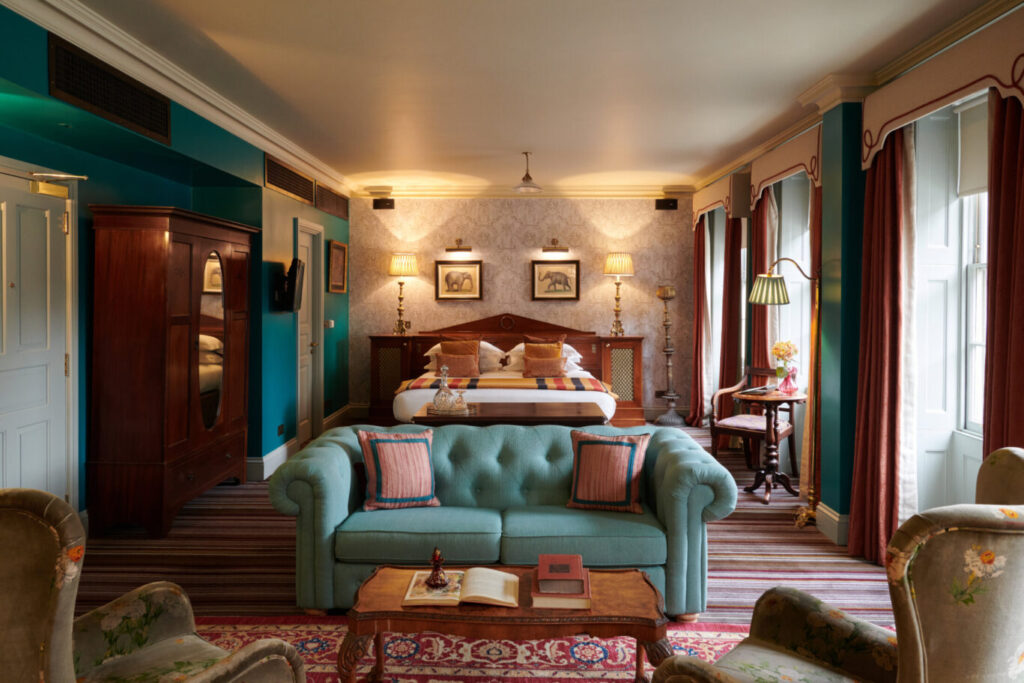

We love this hotel’s absolute commitment to character over convention. Rooms feature details like wrought-iron four-posters and freestanding copper bathtubs, while still offering proper reading lights and sensible plug locations—proving imagination and functionality needn’t be mutually exclusive.
Clerkenwell itself suits the hotel perfectly; this ancient parish was once home to watchmakers and printworks before becoming a hub for architectural practices and design studios. Like the hotel, it balances historical richness with contemporary creativity. There is now a second in Marylebone.
Read: The best restaurants near Farringdon
Hazlitt’s, Soho
Whilst Soho has transformed repeatedly over centuries, Hazlitt’s remains defiantly unchanged on Frith Street. Occupying four connected Georgian houses, the hotel takes its name from essayist William Hazlitt, who spent his final days in what now serves as one of 30 guest rooms, each preserving period authenticity without descending into theme-park historicism.
Hazlitt’s resists modern hotel conventions at every turn. There’s no reception desk—instead, you’re welcomed in a wood-panelled lounge. Televisions exist but remain hidden in vintage cabinets. Bathrooms feature restored Victorian plumbing fixtures that occasionally require patience but deliver character absent from contemporary counterparts.
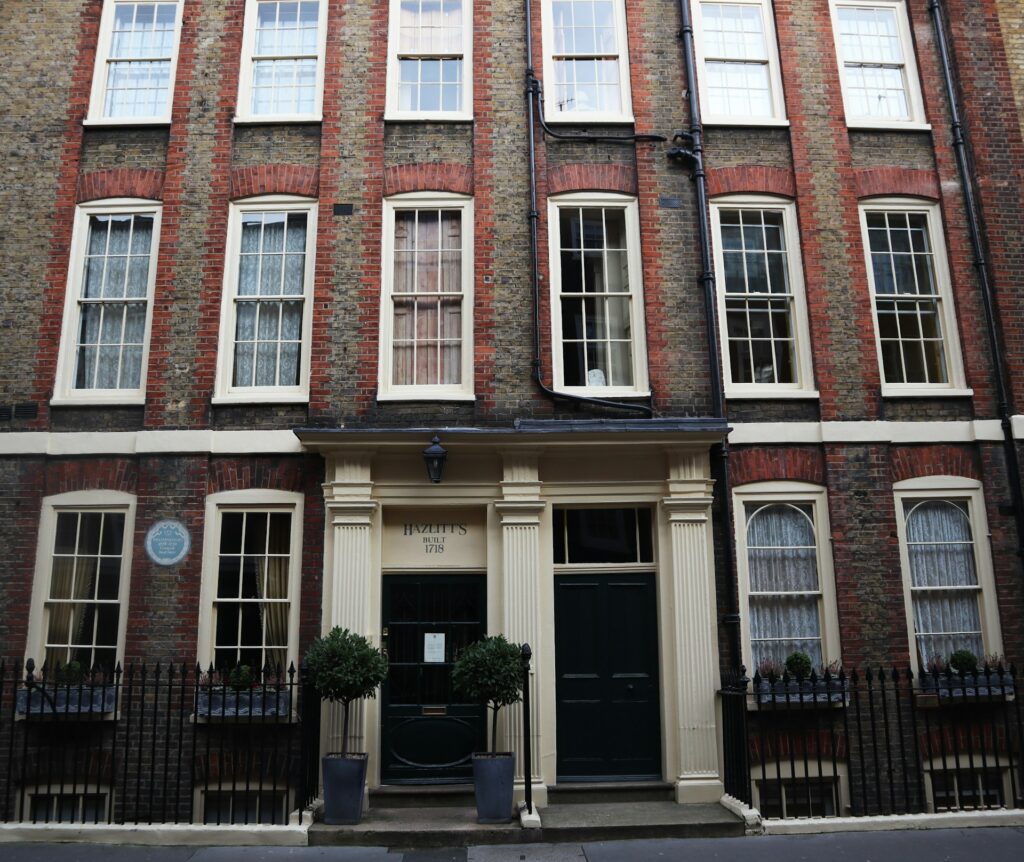
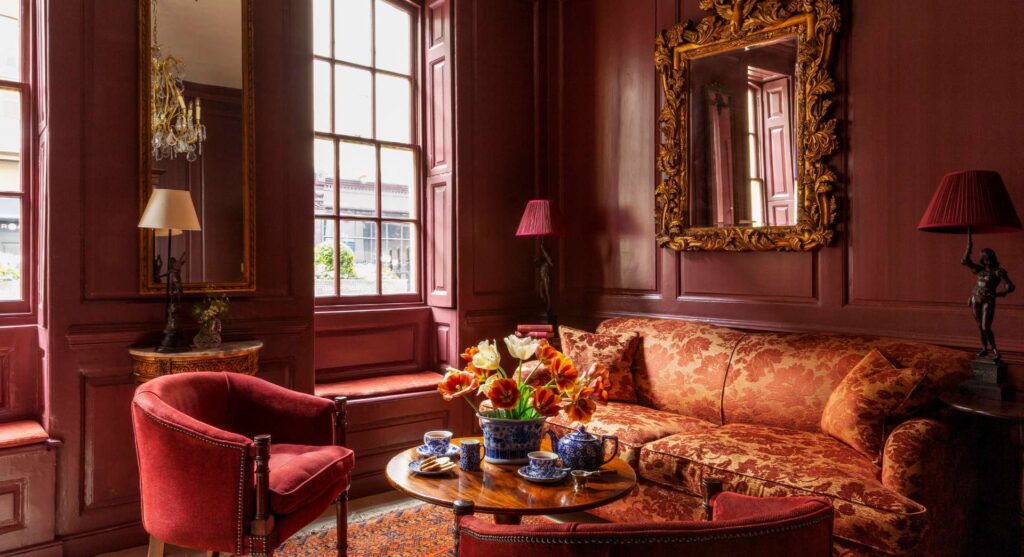
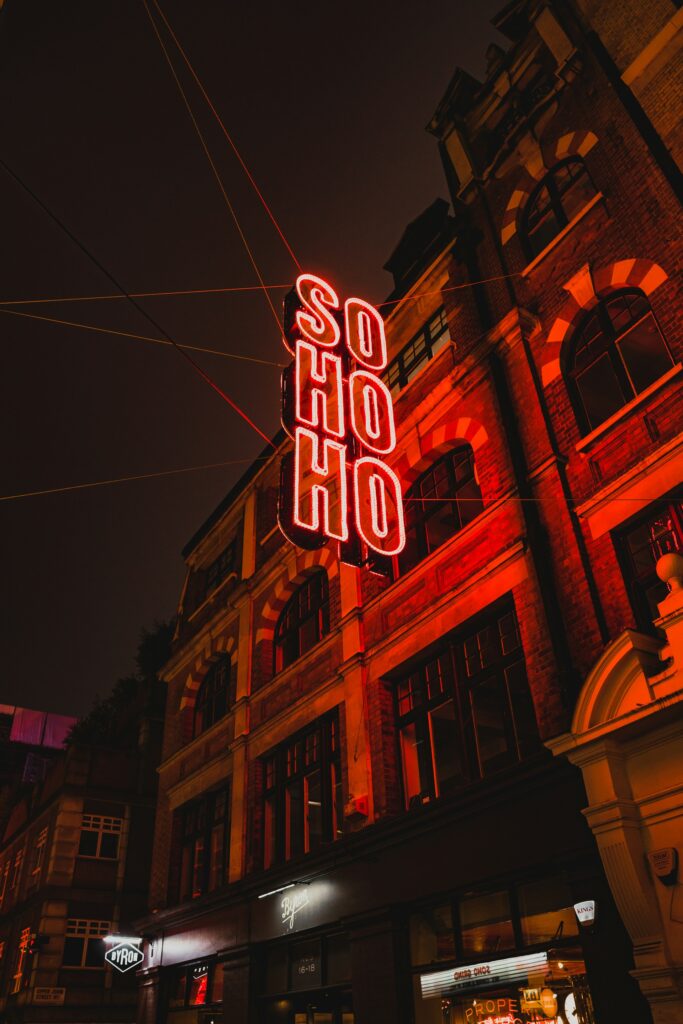
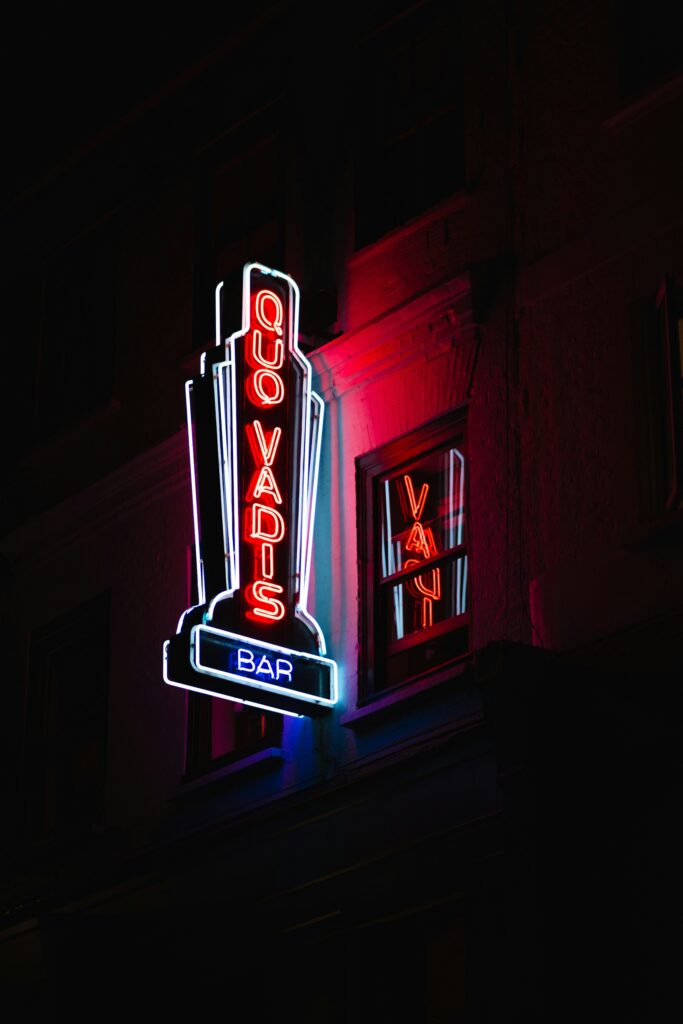
The hotel cultivates a literary connection through both its namesake and its guest list—many publishers house their authors here during promotional tours, resulting in a library of signed works from regulars like Tartt, Rushdie and Rowling.
Staying at Hazlitt’s means embracing certain quirks: floorboards that announce your every movement, staircases unsuited to rolling luggage, and plumbing that occasionally voices opinions. These aren’t flaws but essential components of its authenticity—something increasingly precious as Soho undergoes its latest reinvention from media district to tourist thoroughfare. Oh, and you’re only a couple of minutes away from some of our favourites restaurants in Soho, including Quo Vadis on Dean Street.
Read: The best restaurants on Dean Street, Soho
The Mandrake, Fitzrovia
If Hazlitt’s looks backward, The Mandrake thrusts itself forward with theatrical intensity. Named after a plant associated with mysticism and hallucinatory properties, this 34-room hotel in Fitzrovia delivers an experience deliberately designed to disorient and enthrall.
The entrance—an unassuming black door on Newman Street—gives little indication of what awaits: a central courtyard wrapped in three storeys of hanging jasmine and passionflower, creating a vertical garden that seems to defy urban possibility. This juxtaposition between stark exterior and lush interior sets the tone for a property that continually plays with perception.
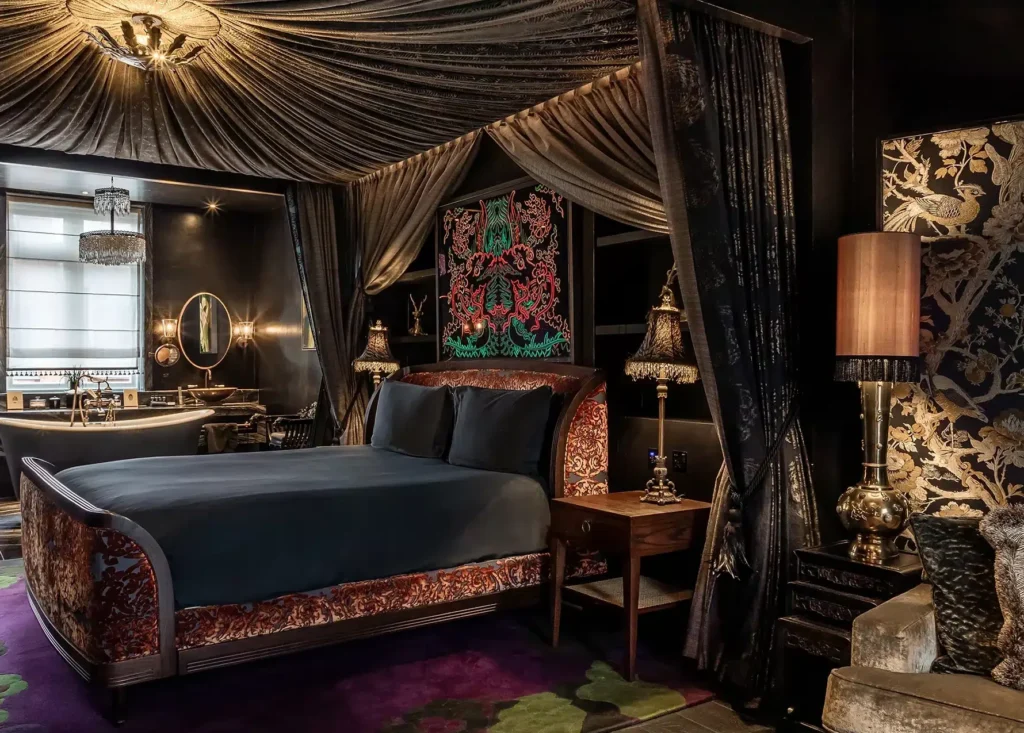
Owner Rami Fustok has filled the hotel with his personal art collection, including pieces by Salvador Dalí and Francesco Clemente. The basement houses a salon for rotating artistic residencies and performances too experimental for conventional venues.
The Mandrake’s rooms progress from merely striking to actively surreal. The Penthouse features a bathroom carved from a single massive block of Veronese marble, while the Jurema Penthouse includes a private outdoor bathing area surrounded by medicinal plants.
What makes The Mandrake genuinely boutique isn’t just its limited room count but its divisive vision—this is hospitality with conviction rather than broad appeal, creating an experience impossible to replicate elsewhere.
Henrietta Hotel, Covent Garden
The Experimental Group made their name with cocktail bars before expanding into hotels, and this heritage informs every aspect of the 18-room Henrietta Hotel. Occupying two townhouses just metres from Covent Garden’s bustle, the property demonstrates how thoroughly French sensibilities can reinvigorate British tradition.
Designer Dorothée Meilichzon has created rooms that reference both the building’s Victorian origins and 1970s Italian design—think geometric headboards, terrazzo bathrooms, and brass fixtures that develop patina rather than receiving regular polishing to manufactured perfection.
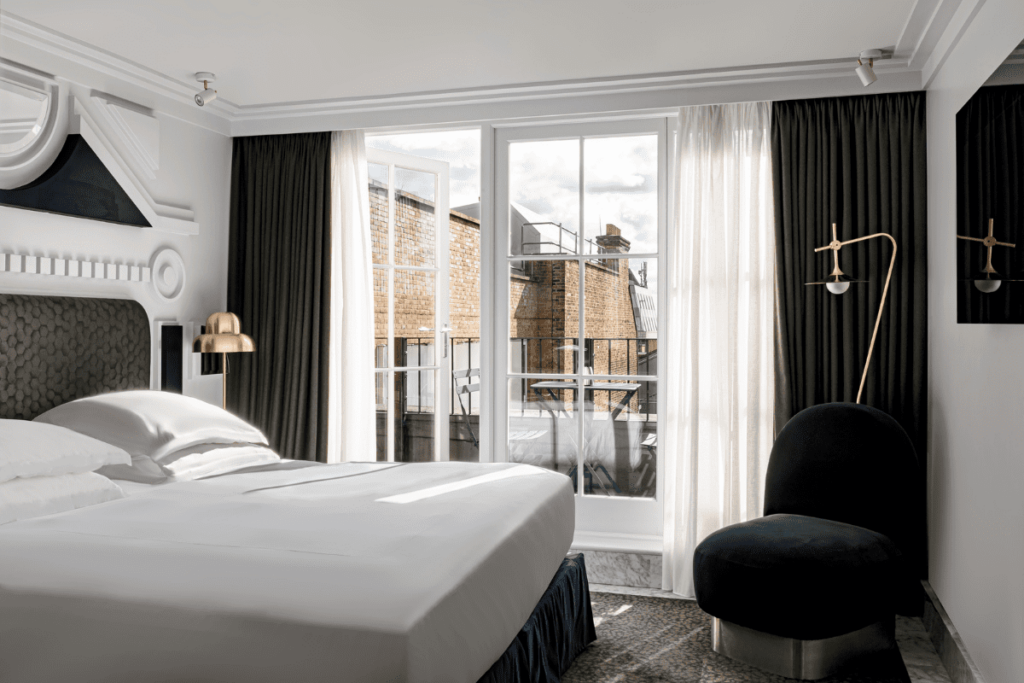

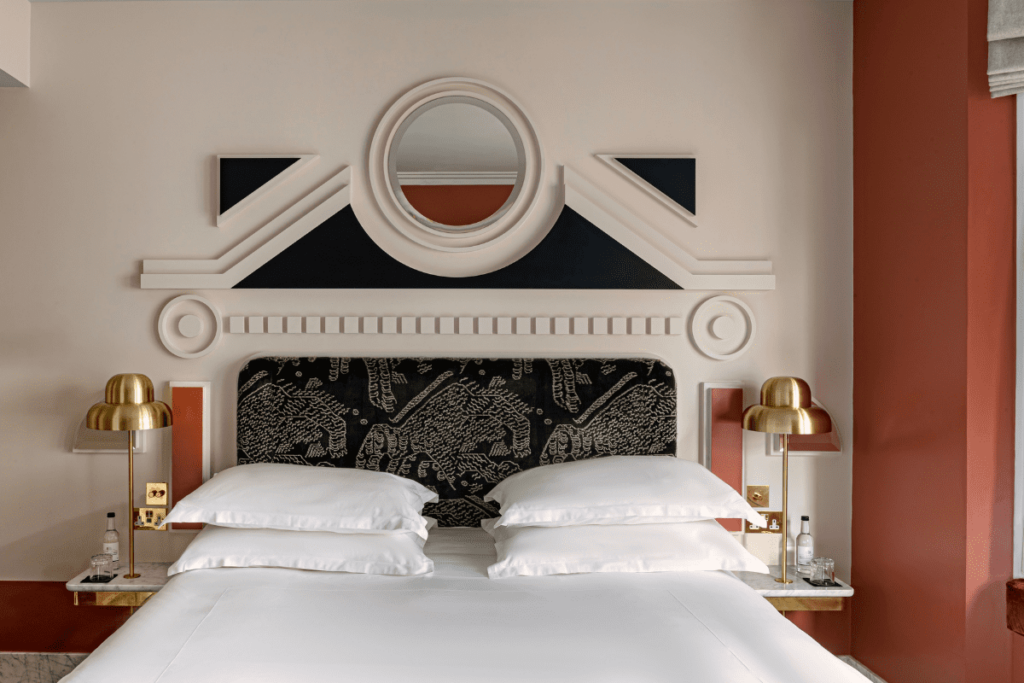
The jewel in Henrietta’s crown is arguably its newly reimagined restaurant, Henri. Here, celebrated British chef Jackson Boxer (of Brunswick House fame) has created something far more intriguing than standard hotel fare. While the marble-topped tables, ceiling murals and gilt candlesticks suggest traditional Parisian bistro, the menu delivers delightful subversion. Dishes like fried pied de cochon with bier mustard, vegan carrot râpée with black olive and sesame, and bavette steak with Szechuan peppercorns and XO-infused cognac sauce create what Time Out called “a reflection of modern Paris, a place often thwarted by its own monolithic history.”
The restaurant, recently redesigned by Meilichzon herself, offers both indoor seating and a sun-drenched terrace—rare outdoor space in this densely built neighbourhood. While many hotel restaurants feel like afterthoughts, Henri functions as genuine destination dining that enhances the property’s appeal for both guests and locals.
What sets the Henrietta apart isn’t flashy amenities but confident restraint. By focusing on fundamentals—genuinely comfortable beds, thoughtful lighting, proper soundproofing—and adding carefully considered details like books selected by Mayfair’s Heywood Hill booksellers, it achieves a subtle balance between style and substance often missing in design-led properties.
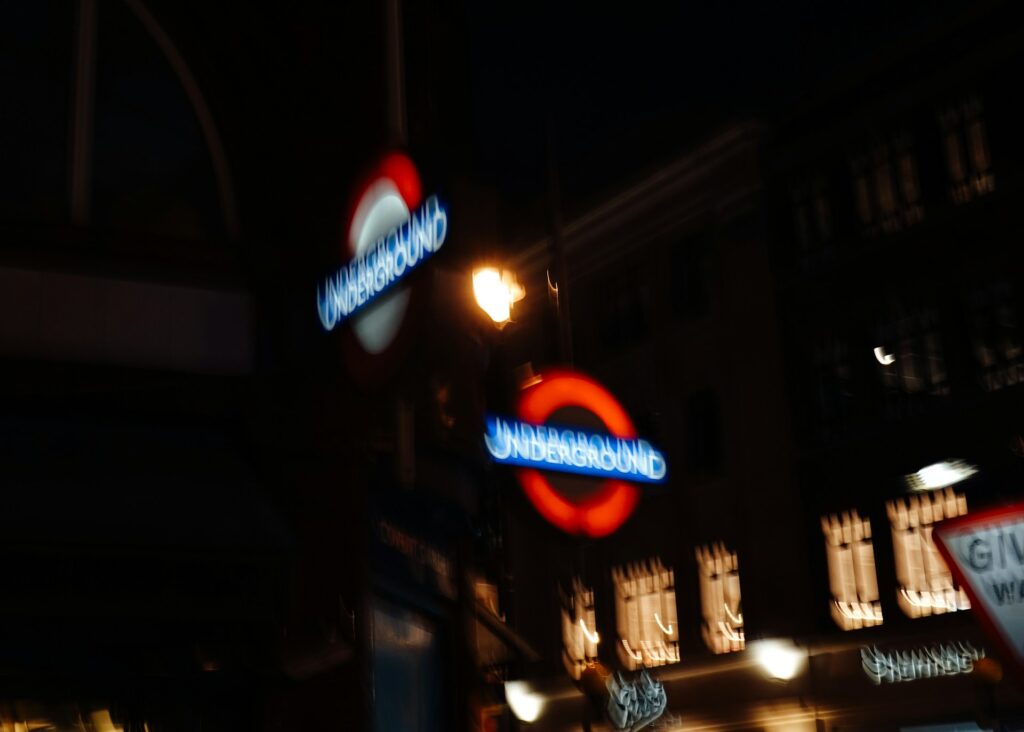
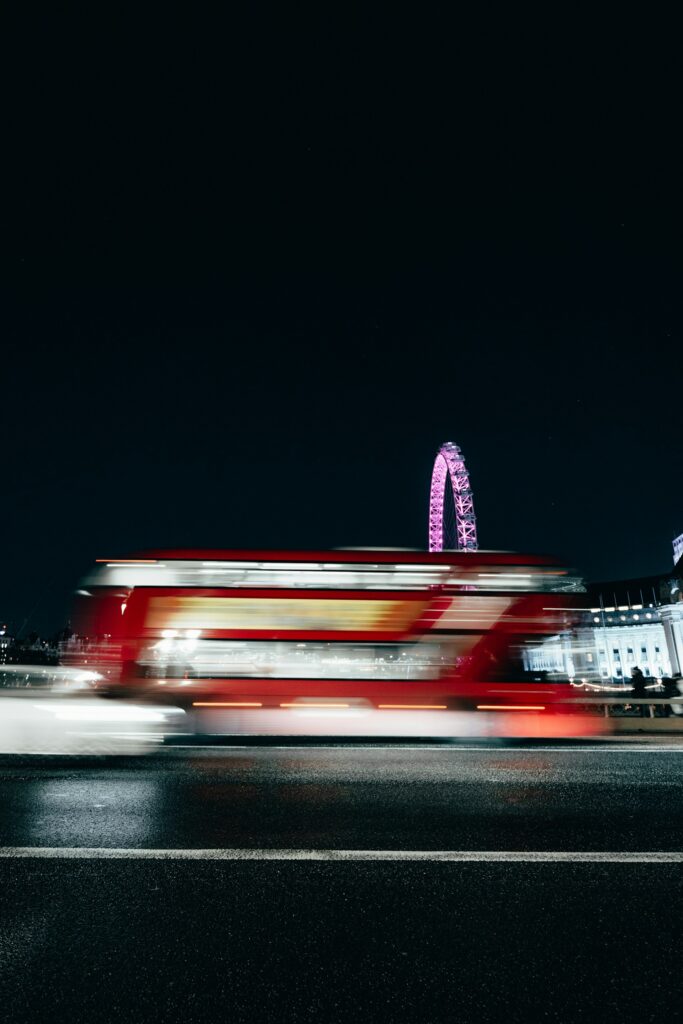
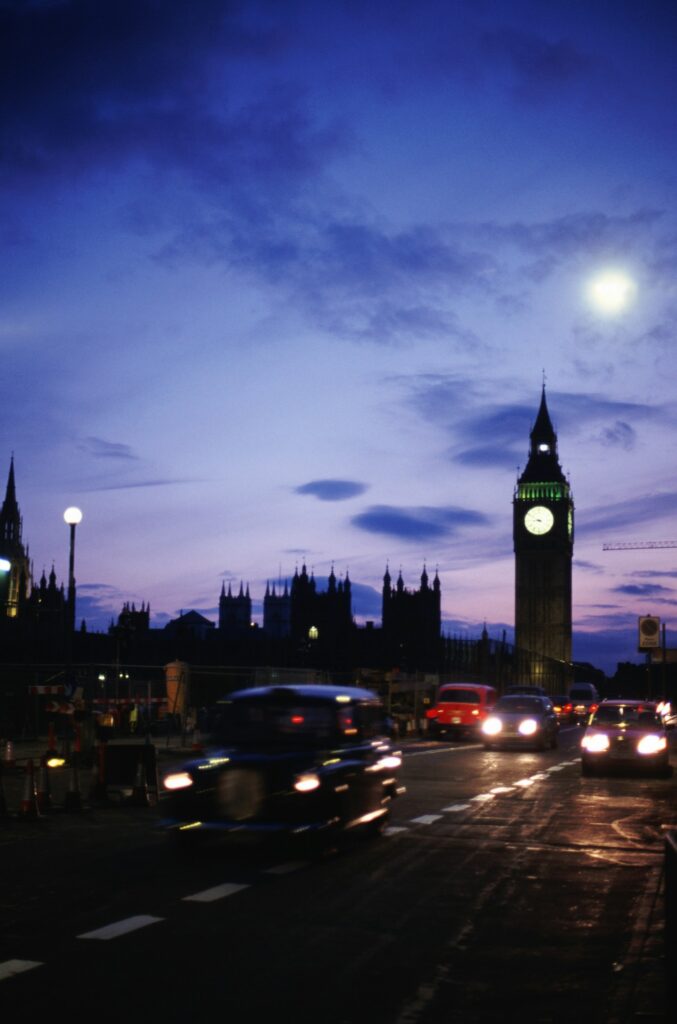
Batty Langley’s, Spitalfields
Named after an 18th-century designer who published guides for creating “genteel” interiors, Batty Langley’s embraces historical cosplay with rare conviction. The 29 rooms occupy reconstructed Georgian buildings on Folgate Street, just steps from the Liverpool Street financial district but atmospherically centuries removed.
The owners—the same team behind Hazlitt’s—have sourced genuine antiques rather than reproductions, creating environments that feel genuinely lived-in rather than artificially aged. Four-poster beds, oil portraits and reading nooks tucked into unexpected corners create spaces that reward exploration.
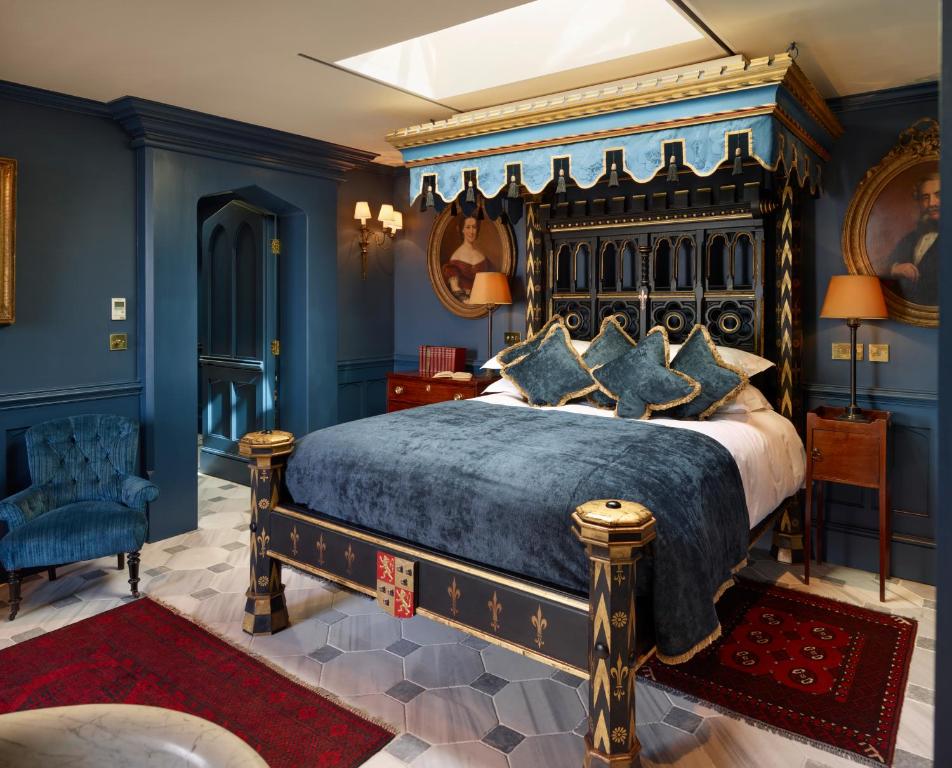
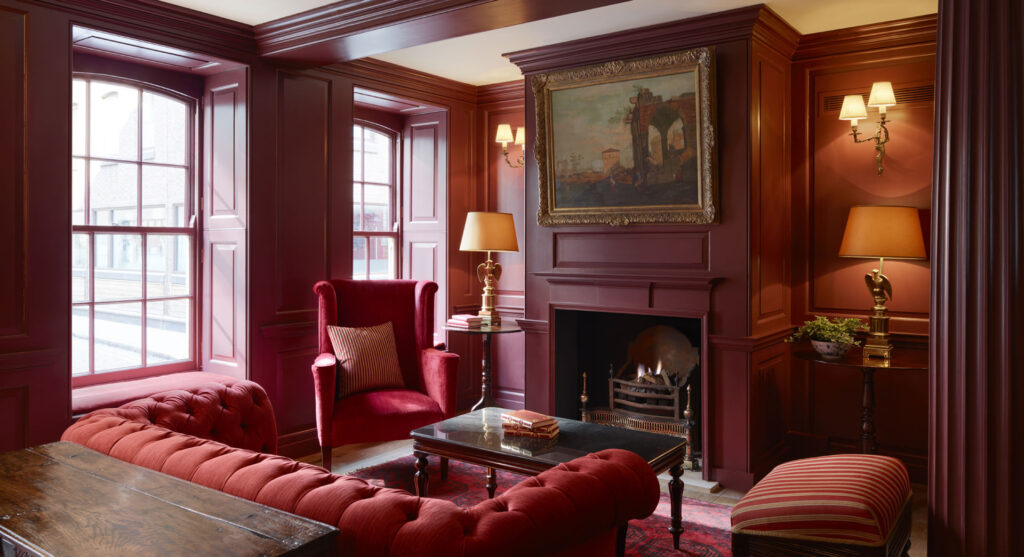
What separates Batty Langley’s from heritage hotels is its playful relationship with history. Bathrooms hidden behind bookcases acknowledge both period accuracy (Georgians didn’t feature plumbing prominently) and modern preferences for privacy, while the ‘necessarium’ (toilet) might take the form of a mahogany throne that makes every visit ceremonial.
The absence of standard hotel facilities—there’s no restaurant, just breakfast delivered to your room and an honesty bar in the library—reinforces the illusion of staying in a private home rather than a commercial property.
Spitalfields itself embodies the tensions in contemporary London between preservation and development, chain retailers and independent businesses, financial wealth and creative capital. Batty Langley’s sits confidently amid these contradictions, offering a perspective distinctly its own.
Read: The best restaurants near Liverpool Street
The Pilgrm, Paddington
Not all boutique hotels require investment banker budgets. The Pilgrm (deliberately misspelled) demonstrates how thoughtful design can create distinctive experiences at accessible price points. Occupying a Victorian building near Paddington Station, it strips away unnecessary hotel conventions to focus on what actually matters to contemporary travellers.
Gone are minibars, telephones, reception desks and other hospitality relics. Instead, guests check in online and find their rooms equipped with basics executed exceptionally well: proper mattresses, rainfall showers, reliable WiFi and Marshall speakers. Salvaged materials—parquet flooring reclaimed from elementary schools, mahogany staircase balusters repurposed as clothing hooks—add character while reflecting environmental consciousness.

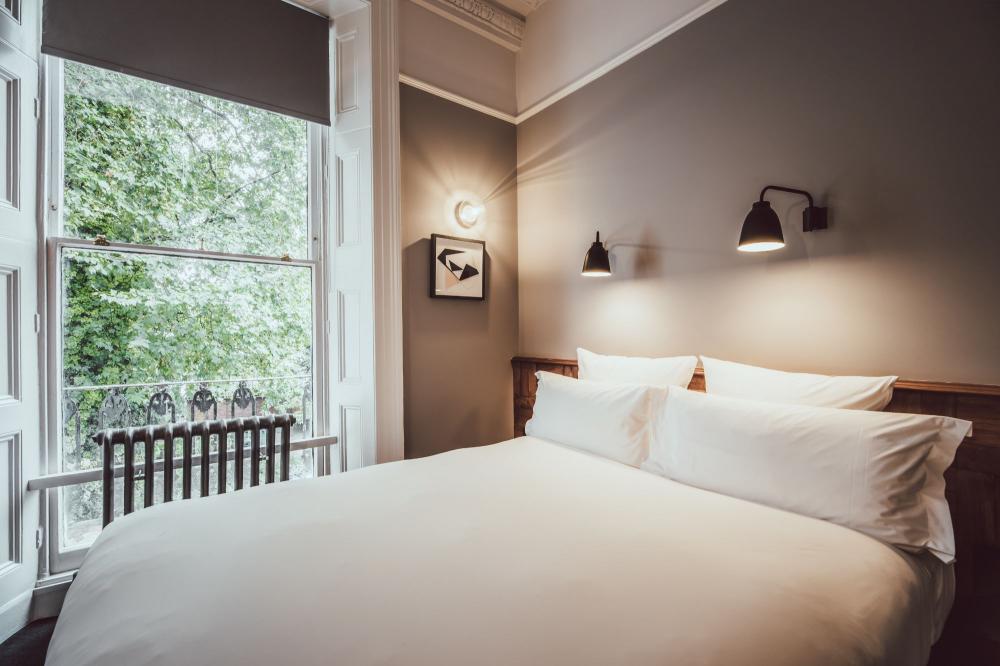
The Pilgrm’s 73 rooms range from compact singles (‘Bunk’) to more generous doubles, but all share an aesthetic that respects the building’s Victorian bones while incorporating contemporary necessities. The lounge serves exceptional coffee, natural wines and contemporary comfort food with minimal fuss.
What makes The Pilgrm genuinely boutique isn’t fabricated eccentricity but confident purposefulness—this is hospitality that knows exactly what it wants to be and doesn’t waste energy pretending otherwise.
The Rookery, Clerkenwell
While Clerkenwell now houses design studios and architectural practices, its name derives from ‘Clerk’s Well’—a medieval water source where parish clerks performed religious plays. This layered history informs The Rookery, a 33-room hotel occupying three restored 18th-century townhouses on a cobbled lane near Smithfield Market.
‘Rookery’ historically described crowded tenements, but this modern incarnation offers precisely the opposite—spacious rooms named after former local residents, furnished with antiques chosen for comfort rather than merely appearance. Four-poster beds, working fireplaces and roll-top baths create environments that invite lingering.
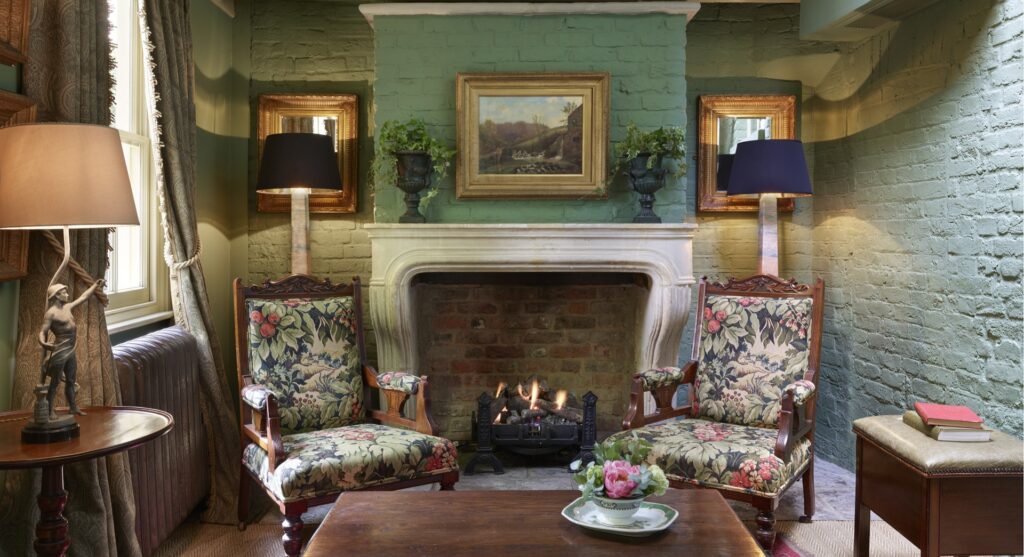

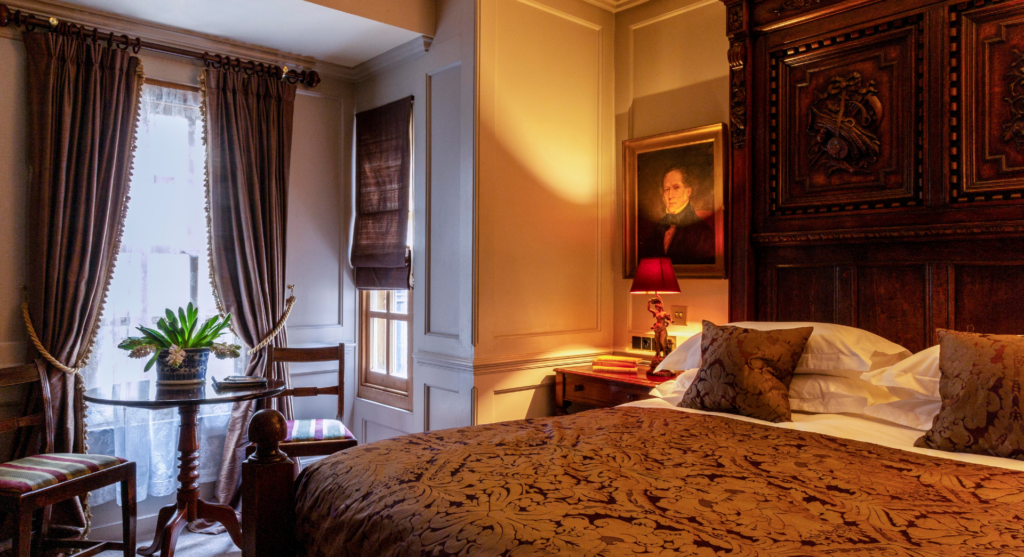
Unlike boutique hotels that mistake discomfort for character, The Rookery balances period authenticity with modern expectations. Heating works properly, beds don’t sag, and bathrooms deliver consistent hot water through fixtures that merely look Victorian.
The property’s heart is its small library featuring an honesty bar and open fire—a room that has hosted everything from publishing negotiations to marriage proposals. Without restaurant or spa facilities, The Rookery concentrates on creating somewhere genuinely restful in a city that rarely stops moving.
Clerkenwell’s evolution from medieval religious centre to industrial zone to creative hub means guests step outside into streets where 12th-century priory ruins stand alongside brutalist council estates and contemporary glass offices—a physical timeline of London’s continuous reinvention.
Town Hall Hotel, Bethnal Green
When the Town Hall Hotel opened in 2010, Bethnal Green wasn’t an obvious location for luxury accommodation. This former municipal building—a magnificent 1910 Edwardian structure with 1930s extensions—demonstrates how thoughtful architecture can both preserve heritage and create something entirely new.
The 97 rooms occupy former council offices and public spaces, ranging from snug ‘feature doubles’ to expansive apartments. Original architectural elements—marble staircases, wooden panelling, Art Deco windows—remain intact while accommodating contemporary necessities. The former council chamber now serves as an event space, its public gallery and speaker’s podium preserved rather than removed.
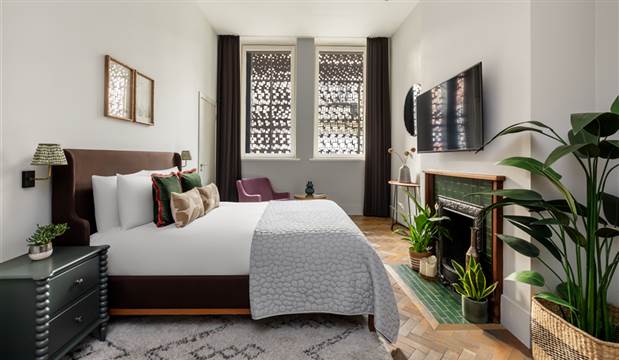
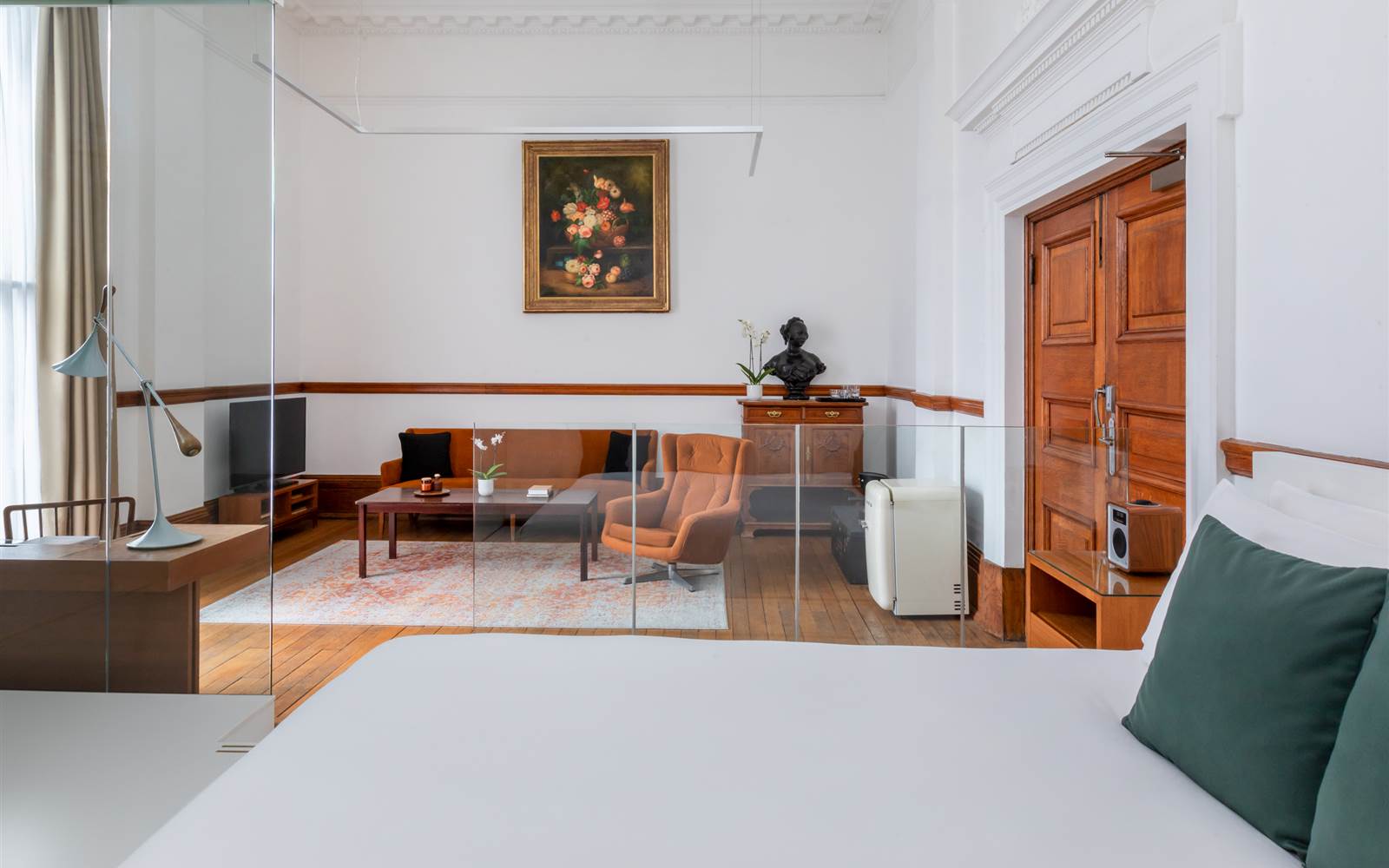
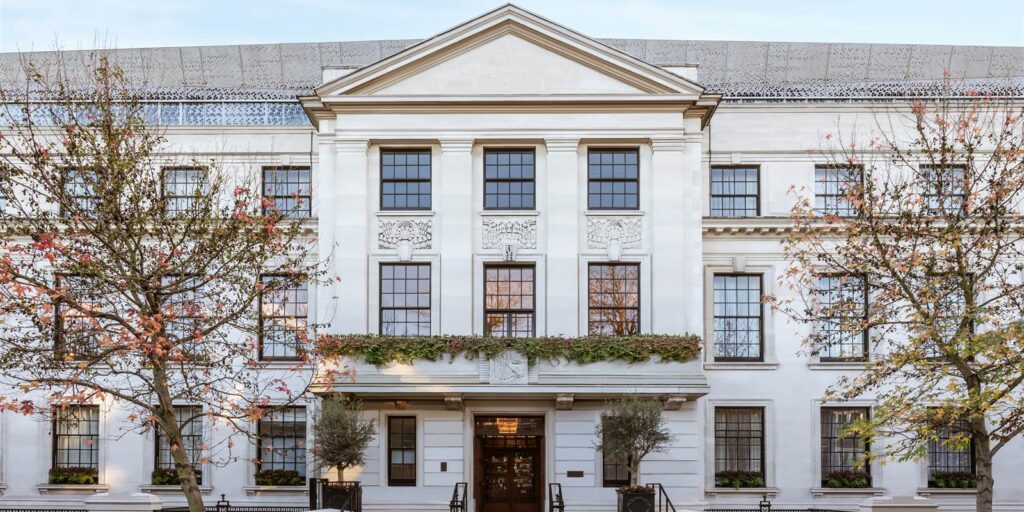
Unlike boutique hotels that rely on decorative flourishes, Town Hall Hotel’s distinctiveness emerges from its fundamental structure—high ceilings, generous windows and architectural details that couldn’t be replicated in new construction. The concrete and brass additions by architects Rare complement rather than compete with the original elements.
The hotel houses two remarkable dining venues helmed by Chef Rafael Cagali—Da Terra, a two Michelin-starred fine-dining concept offering intricate 5-10 course tasting menus, and Restaurant Elis, a more relaxed interpretation of Cagali’s Brazilian-Italian heritage featuring rustic dishes and elegant snacks. For drinks, the Silk Weaver bar provides artful cocktails, while the Assembly Lounge—formerly where the Council would convene—offers light bites and refreshments throughout the day.
What makes Town Hall Hotel truly boutique isn’t just its independent ownership but its genuine relationship with its neighbourhood. Rather than creating a fortress against local reality, it serves as community hub through its restaurants, bars and public spaces, offering visitors authentic connection with an area often missing from tourist itineraries.
Portobello Hotel, Notting Hill
Long before Notting Hill became synonymous with a certain Hugh Grant film, the Portobello Hotel was quietly establishing itself as London’s most discreet rock-and-roll refuge. Occupying two connected Victorian townhouses on Stanley Gardens, this 21-room hotel has hosted everyone from Johnny Depp to Kate Moss without ever releasing tell-all memoirs.
Each room presents a distinct personality, from the split-level ‘Tree House’ to room 16 with its seven-foot circular bed. Victorian bathtubs—including one infamous champagne-filled incident involving a famous model—stand proudly in bedrooms rather than being relegated to separate bathrooms.
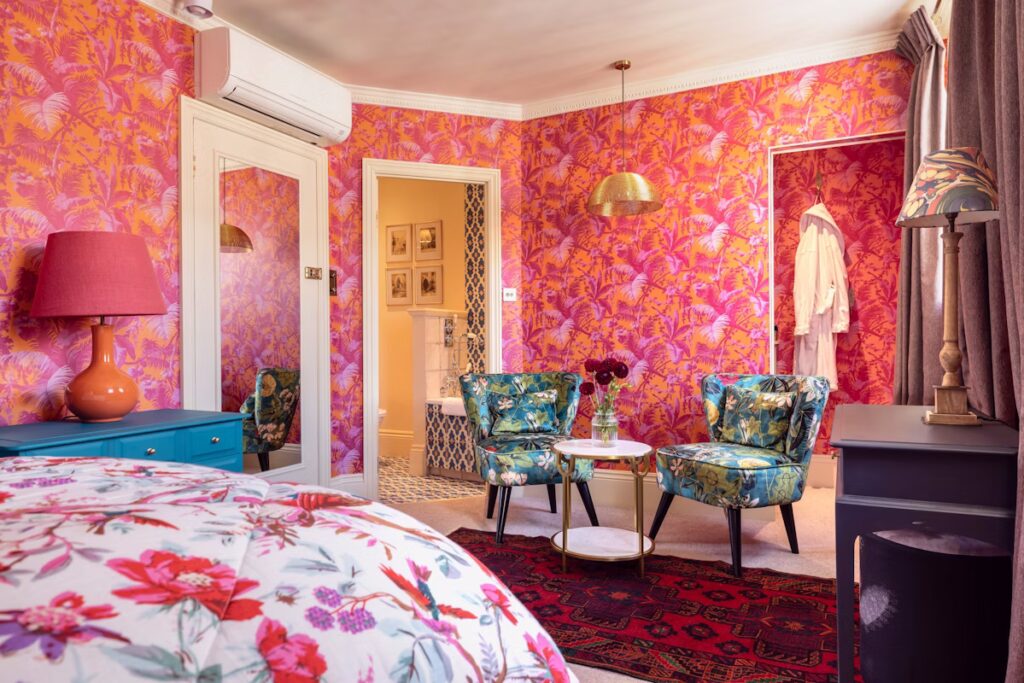
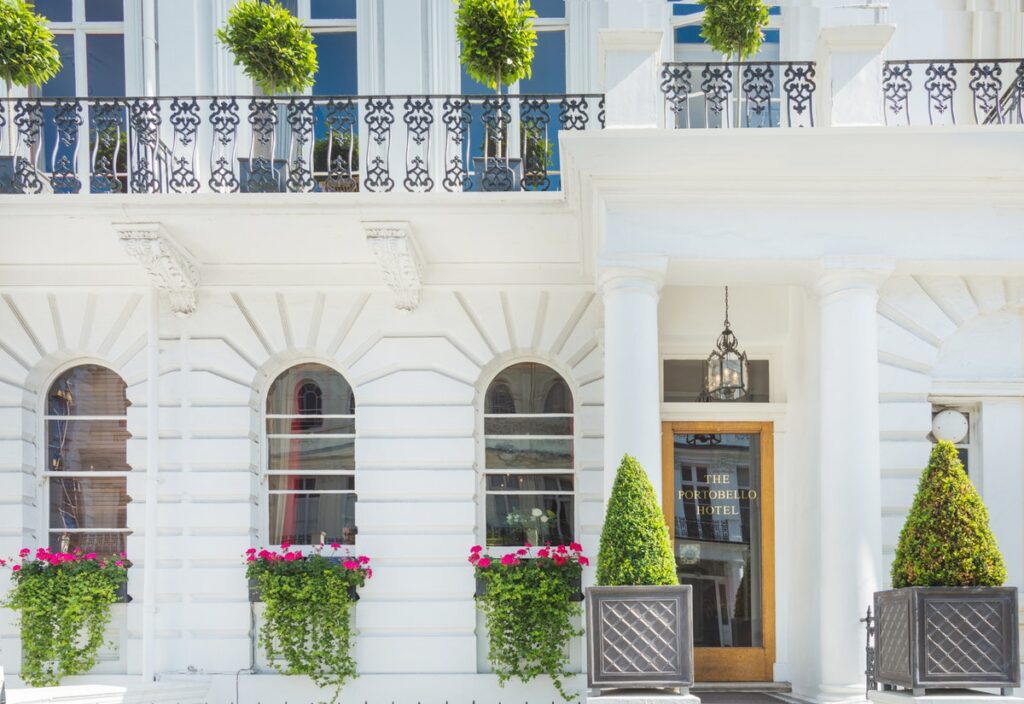
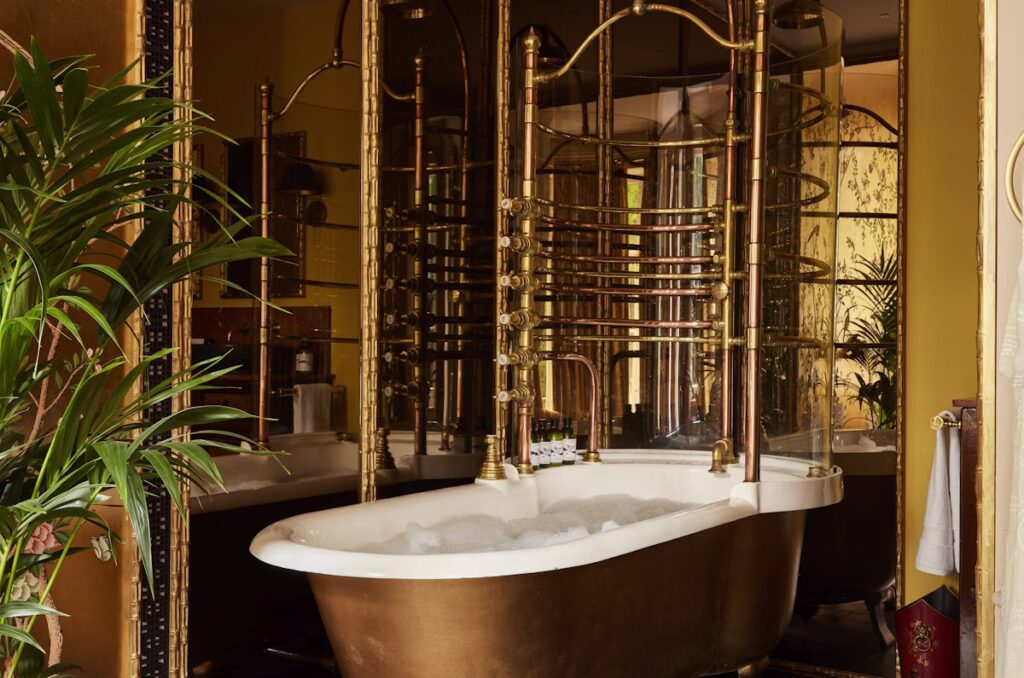
What distinguishes the Portobello is its genuine individuality in an area increasingly defined by international wealth. While Notting Hill has transformed from bohemian enclave to banker territory, the hotel maintains its slightly shabby elegance, valuing character over perfection.
The absence of a restaurant underscores the Portobello’s residential feeling, though breakfast arrives via room service, and honesty bars on each floor encourage independent mixing. The drawing room provides records, board games and newspapers—amusements requiring neither passwords nor chargers.
The Boundary Project, Shoreditch
Sir Terence Conran’s design influence shaped British tastes for decades, and The Boundary Project represents his vision for what urban hospitality could be. Occupying a converted Victorian warehouse on Redchurch Street, the project incorporates 17 hotel rooms, three restaurants, multiple bars and a bakery—creating a vertical village rather than merely accommodation.
Each room draws inspiration from different design movements or practitioners—the Bauhaus Room features furniture from Breuer and Le Corbusier, while the Scandinavian Room showcases pieces by Wegner and Jacobsen. Unlike superficial design hotels that merely mimic iconic styles, these rooms contain genuine collectible pieces within spaces that actually function as places to live temporarily.
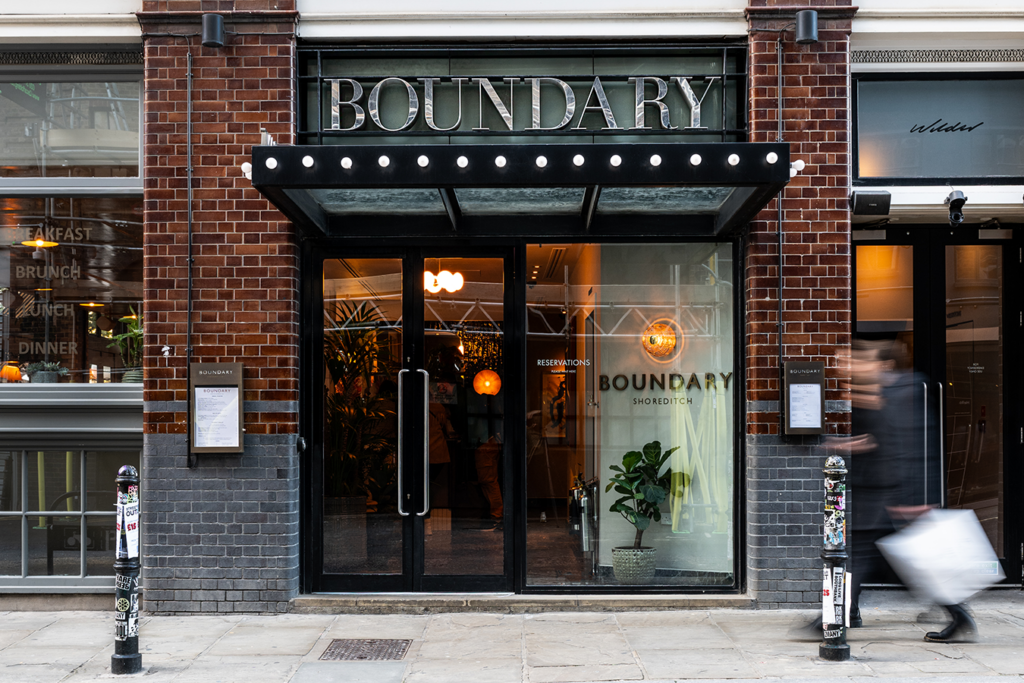
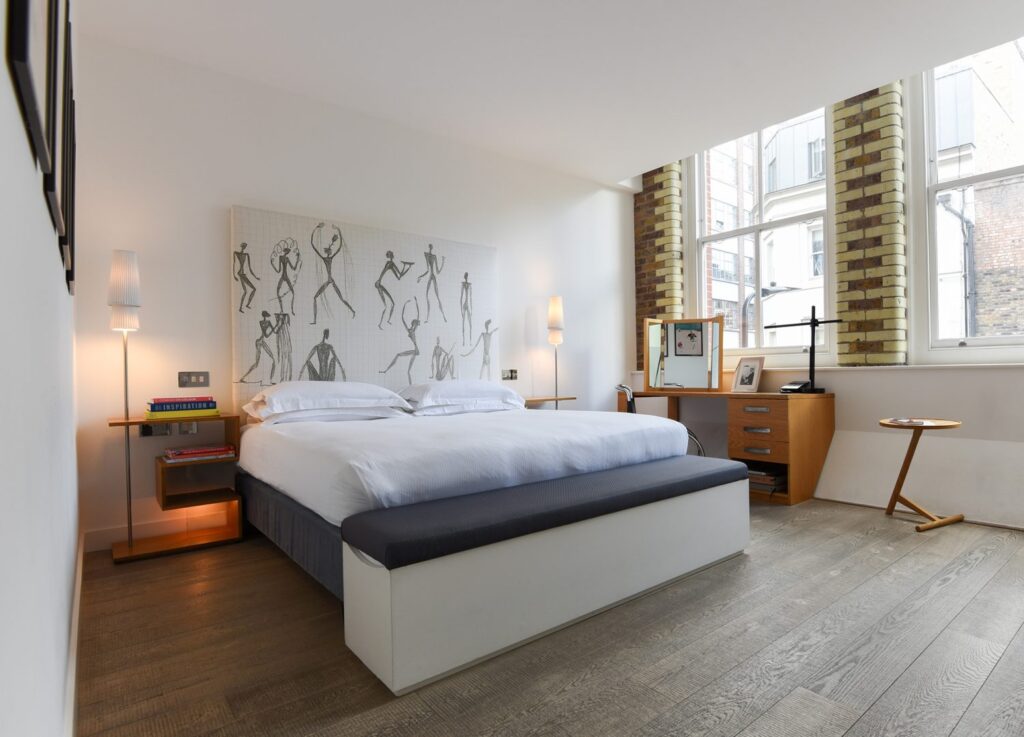
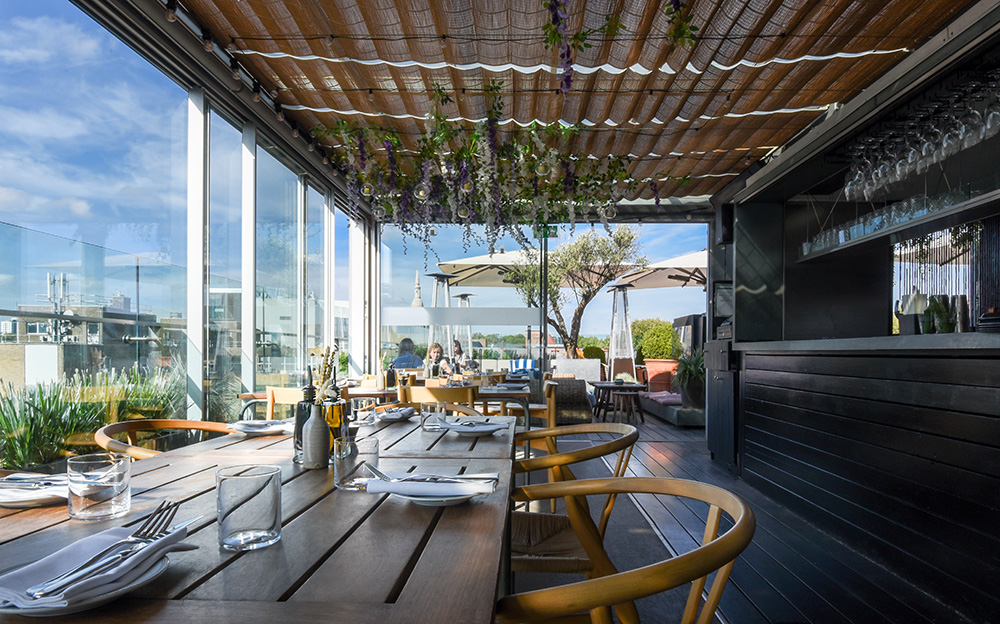
The rooftop restaurant and bar—with views across East London’s transformed skyline—attracts as many locals as visitors, creating a genuine neighbourhood presence rather than tourist isolation.
What makes Boundary genuinely boutique is its integration of different functions that could exist independently but create something greater through proximity—hospitality as ecosystem rather than mere service provision.
The Bottom Line
What separates London’s finest boutique hotels from both budget chains and luxury behemoths isn’t simply room count or ownership structure but their ability to create experiences impossible to replicate elsewhere. Through deliberate design choices, location-specific programming and genuine connection to their surroundings, these properties offer something increasingly rare: a sense of place.
In an era of international standardisation—where hotel rooms from Bangkok to Barcelona increasingly resemble one another—these distinctive properties remind us that true luxury isn’t marble bathrooms or thread counts but the opportunity to experience somewhere genuinely unique. These aren’t just places to sleep but portals into different versions of London—each offering perspective impossible to gain from guidebooks or passing visits.





